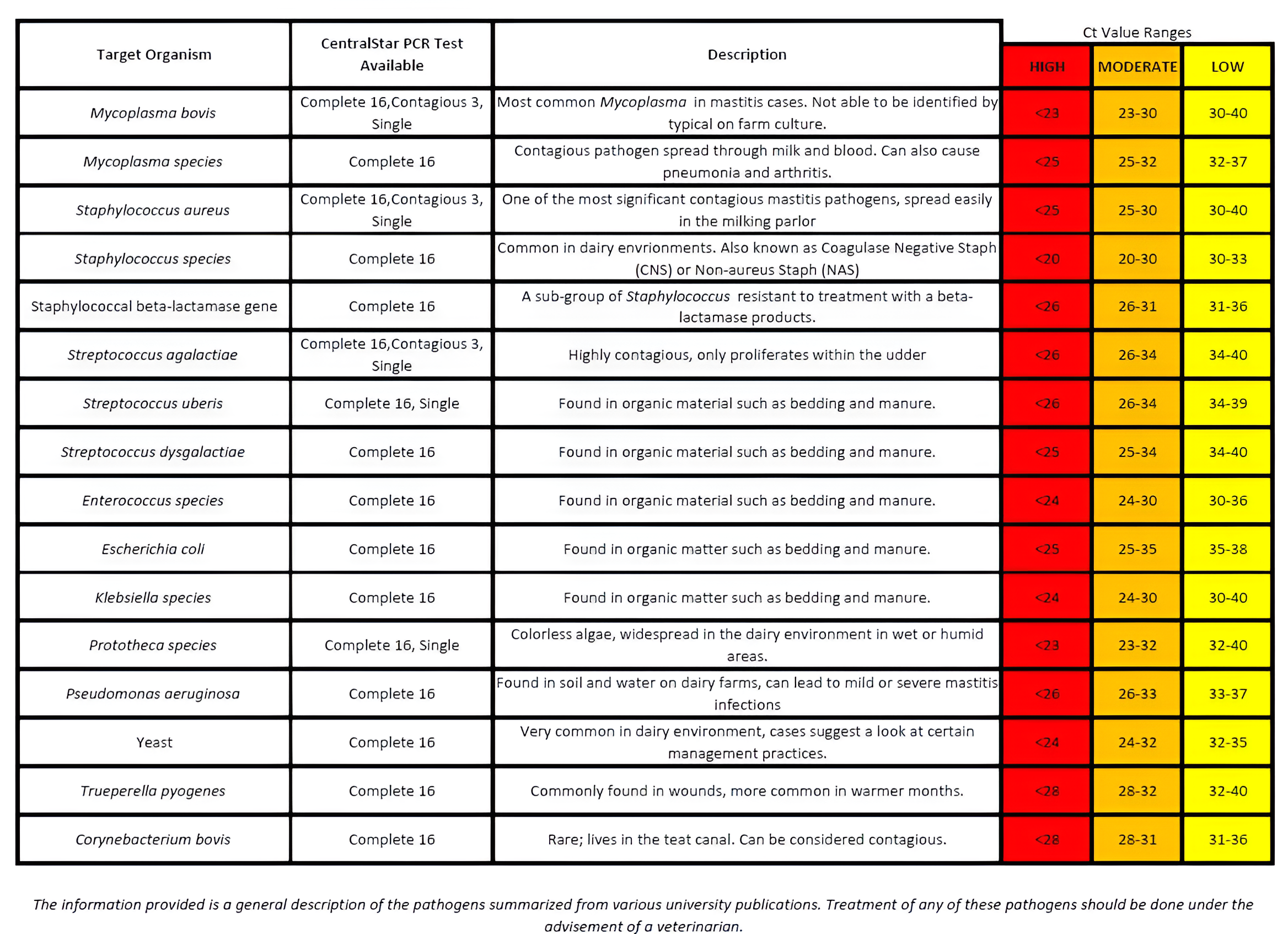What is PCR?
Polymerase chain reaction is an advanced laboratory technique that amplifies DNA so it can be detected even when present in very, very small quantities. It is the same technique used to investigate crime scenes.
How does PCR determine how much DNA is detected?
PCR replicates DNA in similar ways to nature, but at a drastically increased rate with the help of specialized equipment and chemical reagents. When DNA is detected, the test returns a Ct (cycles to threshold) value that can be used to determine the relative abundance of particular pathogens.
What is a Ct value and what does it mean?
The specialized equipment determines how many cycles of a reaction are necessary to cross a certain threshold, yielding a Ct value. The lower the Ct value, the fewer the cycles, and the more DNA originally present in the sample. This is how the Ct values are inversely related to the quantity. Lower Ct values mean higher quantities of DNA, which indicates that pathogen is likely the cause of mastitis.
Why try to detect the DNA?
DNA provides a unique ‘signature’ for each mastitis pathogen. If a unique DNA signature is detected, we know that particular pathogen is in the milk sample. Unlike culture, which relies on pathogen growth, DNA can be detected whether the pathogen is alive or dead in the sample. The presence of the pathogen, along with evidence of a pre-existing udder infection (e.g. high SCC or clinical appearance) is strongly indicative that the pathogen is responsible for existing health conditions.
What if DNA from more than one species or pathogen is detected in a milk sample?
Producers should focus on the pathogen with the lowest value first because the lower value indicates stronger presence of that pathogen. This is especially true when one of the detected pathogens has a much lower value relative to the rest (e.g. 26 vs 35).
What should be done with positive results when PCR values for different organisms are similar?
There are many factors that should be considered when interpreting mastitis PCR results, including the interpretation of any other diagnostic test result, testing history, clinical observations, environmental conditions, and management factors.
When can pooling be considered for mastitis testing?
There are a wide range of pooling strategies available to help reduce cost while still providing valuable management decision guidance. String samples and group screenings are two strategies commonly used. With any strategy there is a maximum of five animals per single pool. These strategies should be discussed with the technical specialist listed below to determine the best option for your operation.
Why use PCR rather than culture?
PCR is faster and more sensitive than culture and can be used where culture cannot; specifically, on milk samples from treated cows and preserved samples from DHI test day. Without additional effort on the part of the producer, the very same high SCC sample from a DHI test day can be used to determine causative pathogens, rather than waiting days to obtain a handstripped sample for testing.
Can PCR and culture be used together?
While PCR and culture both provide information on mastitis, they are two different tools detecting pathogens by very different methods. Culture is a simple tool to use on-farm to guide treatment decisions for clinical cows. PCR is a convenient way to screen multiple cows (including subclinical animals) for proactive detection of potential mastitis causing pathogens. PCR can also be used to more definitively identify cows infected with contagious pathogens such as Staph aureus, to ensure informed management and/or culling decisions are made. In the case of Mycoplasma bovis, standard culture cannot be performed without special media and incubation, and results can take up to two weeks. PCR can provide results in the same 48-hour time frame as all other listed pathogens.
If the test is so sensitive is contamination a concern for PCR on DHI samples?
Yes. CentralStar DHI Specialists are trained on the importance of controlling potential carryover to reduce risk of contamination. This is also why it is important to take other factors, like those listed above, into consideration when evaluating results.
What if results return no pathogens detected?
There are a couple reasons this could happen with PCR testing. First, the immune system of the cow works to fight off mastitis infections. This process causes pathogens to be shed in “waves” sometimes at such low levels that they are not detectable, even by tests as sensitive as PCR. A resubmission of that same cow within a week or two may show a positive result. Second, there are a handful of known mastitis causing pathogens not included in the PCR Complete 16 Panel, such as Bacillus, Serratia, or Lactococcus. These pathogens tend to be rarely identified as causing mastitis compared to those included in the panel.
What is the turnaround time for PCR?
Results are available within two business days from the time they arrive in the laboratory. Allow for additional time for shipping, whether on a DHI route truck or via a postal carrier such as FedEx or UPS.
Mastitis Pathogen Explanation
Click image to open full size.
Who is available to help interpret PCR results?
Michelle Kaufmann, Customer Solutions Advisor
[email protected]
989.493.2715

